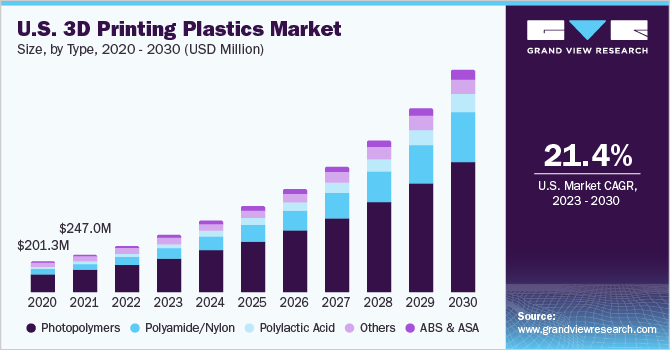Cardiac Rhythm Management Devices Industry Overview
The global cardiac rhythm management devices market size was valued at USD 18.1 billion in 2021 and is estimated to expand at a compound annual growth rate (CAGR) of 6.5% from 2022 to 2030.
Growing prevalence of various cardiovascular diseases, such as arrhythmia and atrial fibrillation, among others. According to the Centers for Disease Control and Prevention (CDC), around 12.1 million people in the U.S. are expected to suffer from atrial fibrillation (AFib) by 2030. Furthermore, various technological advancements related to the market are also anticipated to fuel market growth.
Gather more insights about the market drivers, restrains and growth of the Global Cardiac Rhythm Management Devices Market
The COVID-19 pandemic has impacted all industries, including the market for cardiac rhythm management (CRM) devices. Market players have experienced huge losses in their cardiac rhythm management segments due to the postponement of cardiovascular procedures. For instance, Medtronic experienced a 12% decrease in its cardiac rhythm management devices segment in 2020, as compared to 2019. The decline was majorly experienced in ICDs, CRT-Ds, and the pacemakers segment. In 2021, Medtronic is recovering in terms of its annual revenue as well as cardiac rhythm and heart failure segment revenue. The company experienced a rise of 4.16% in its total revenue from 2020 to 2021.
Similar trends are noticed in the financial results of other market players. Hence, the market for cardiac rhythm management devices was negatively influenced due to the pandemic initially. However, it has started to recover in 2021. Physical inactivity is a major public health concern as it is the second most death causative agent in the U.S. Physical inactivity leads to morbidity and development of chronic conditions such as cardiac disorders and diabetes. As per the WHO, physical inactivity or sedentary lifestyle results in around 2 million deaths per year. In addition, it has been estimated that around 60% to 85% of the population in both developed and developing countries leads a sedentary lifestyle. This is further anticipated to increase the demand over the forecast period.

Favorable reimbursement policies have led to higher adoption of medical devices by patients in countries like Canada, the U.S., and the U.K., thereby increasing market penetration. Furthermore, increasing government efforts, and the adoption of new CRM technologies are expected to boost the growth over the forecast period. For instance, regulations regarding the use of external defibrillators in public places. In California, the New Laws of 2018 mandate the placement of Automated External Defibrillator (AED) at various locations including schools and public swimming pools. Owing to the increasing life expectancy and availability of advanced technologies, the adoption of CRM devices has increased in the past few years.
Heart disease is the major cause of death in recent years. According to World Health Organization (WHO) estimates, each year cardiovascular diseases (CVDs) result in around 17.9 million mortalities. Cardiovascular diseases are very commonly known as the ‘silent epidemic’ since they are slow to show symptoms. In addition, they are estimated to be one of the most expensive health conditions to treat. CRM devices are not only used to manage and monitor cardiac issues but also have applications in repairing, restoring, and healing cardiac activities. These associated benefits are expected to boost the adoption over the forecast period.
Browse through Grand View Research's Medical Devices Industry Related Reports
- Cardiac Resynchronization Therapy Market - The global cardiac resynchronization therapy market size was valued at USD 5.85 billion in 2021 and is estimated to grow at a compound annual growth rate (CAGR) of 7.3% from 2022 to 2030. Growing product developments, aging population, initiatives by key companies, and prevalence of Cardiovascular Diseases (CVDs) are some of the key drivers of this market.
- Pacemakers Market - The global pacemakers market size was valued at USD 4.4 billion in 2021 and is estimated to expand at a compound annual growth rate (CAGR) of 3.4% from 2022 to 2030. Rising incidences of CVDs, increasing cost of cardiac disease management, favorable government policies, and the launch of technologically advanced pacemakers such as the MRI safe pacemakers and leadless pacemakers are chiefly driving the growth in the market.
Market Share Insights
October 2020: Abbott launched its new ICD and CRT-D in India, hence expanding its product portfolio in the country.
July 2020: Abbott received the U.S. Food and Drug Administration (FDA) clearance for its Gallant ICD and CRT-D devices. This enabled the company to market the device in the U.S. while expanding its portfolio.
Key Companies profiled:
Some of the prominent players in the cardiac rhythm management devices market include:
- Physio-Control, Inc. (Stryker)
- Schiller
- Medtronic
- Abbott
- Boston Scientific Corporation
- Koninklijke Philips N.V.
- Zoll Medical Corporation
- BIOTRONIK
- Progetti Srl
- LivaNova Plc
Order a free sample PDF of the Cardiac Rhythm Management Devices Market Intelligence Study, published by Grand View Research.


No comments:
Post a Comment